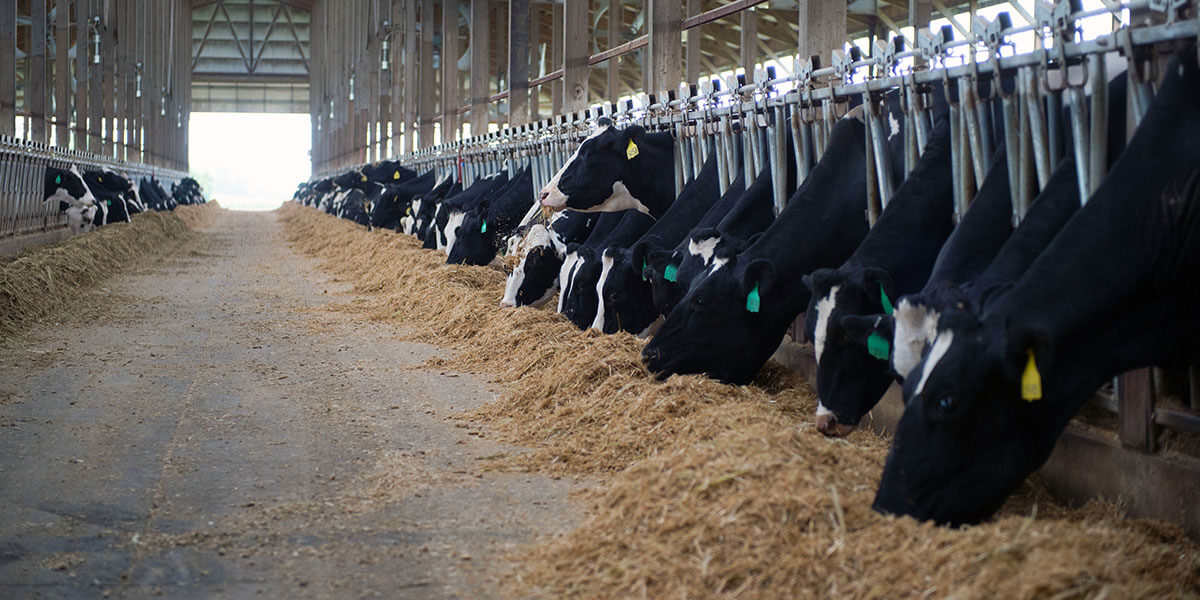As the “natural” and organic food movements gain momentum, more producers have found incorporating performance trace minerals into their feed rations helps them develop a successful antibiotic-free production system, meeting the needs of health-conscious consumers.
Antibiotics in Animal Production
The contentious debate over whether using antibiotics in livestock negatively impacts humans has created a marketing opportunity.
- Provisioner online reports that a National Marketing Institute study recently found that 66 percent of consumers felt it was important that grocery stores offer antibiotic-free meat.1
- The Organic Consumers Association reported overall organic food sales reached $47 billion in 2016, up more than 8 percent from 2015. Sales of organic meat and poultry grew more than 17 percent to $991 million in 2016, marking the category’s biggest yearly gain.2
Antibiotics use in animal production has undergone considerable change as the industry works to address consumer preferences and meet the requirements of the Veterinarian Feed Directive. As antibiotics are phased out of livestock production, it’s important to take steps to strengthen the animal’s immune system and ability to respond to a bacterial challenge.
Trace Minerals vs. Antibiotics in Animals
With the reduced use of antibiotics, producers should be incorporating performance trace minerals into livestock diets to enhance animal immunity and resistance to infection, bacteria, toxins and pathogens.
The lining of the intestinal tract is comprised of a layer of epithelial cells. These cells are bound to each other by complex protein structures called “tight junctions,” and their role is to prevent bacteria, pathogens and toxins from passing through the intestinal lining and into the bloodstream. In the same way, the skin of the animal is comprised of epithelial tissue and provides a physical barrier between the animal and its environment, protecting the animal from bacteria and physical injury.
Trace minerals, such as zinc, have been shown to strengthen the tight junctions between the epithelial cells, helping protect the intestinal tract and skin from infection.
Both the level and the source of zinc in animals’ diets are critically important for the healing process of skin (Lansdown et al., 2007). For example, the percentage of broiler chickens affected by cellulitis, using a challenge model, was decreased from 52 to 40 percent when diets were supplemented with 40 ppm of zinc as zinc amino acid complex. Another study showed improved footpad integrity, with 50 percent versus 30 percent of birds having normal footpads (Downs et al., 2000; Saenmahayak et al., 2010).
Immune Cell Function
If pathogens and toxins manage to penetrate the surface barriers and access deeper lying tissues, then immune cells such as white blood cells will be called into action. This process is commonly called immune activation or inflammation.
Macrophages, a type of white blood cell, engulf and destroy foreign matter such as bacteria (e.g., Escherichia coli) and cellular debris and, thus, play a crucial role in inflammation. Complexed trace minerals are essential for mounting a proper immune response through the multiple roles they play.
Zinc is essential for the proliferation and proper function of immune cells (Rink and Gabriel, 2000). E. coli cleared faster from the blood of three-week-old turkeys when the diet was supplemented with 40 ppm of complexed zinc (Kidd et al., 1994). However, the role of complexed trace minerals goes beyond stimulating the activity of immune cells; it includes protecting the host from toxic substances formed by macrophages.
Macrophages use superoxide to destroy pathogens and other foreign substances. Superoxide, however, is also toxic to host cells and, therefore, needs to be converted to compounds that are less toxic. The crucial step in this scavenging of superoxide requires superoxide dismutase, an enzyme in which zinc, manganese and copper are essential co-factors.
Trace Minerals are a Cost-Effective Antibiotic-Free Solution
The evidence points strongly to the use of highly biofunctional trace minerals to naturally promote animal wellness while meeting consumer demand and maximizing profitability.
To learn more about the extensive, peer-reviewed research that shows how performance trace minerals can help pay dividends in an antibiotic-free production system, contact your Zinpro representative or visit zinpro.com.

